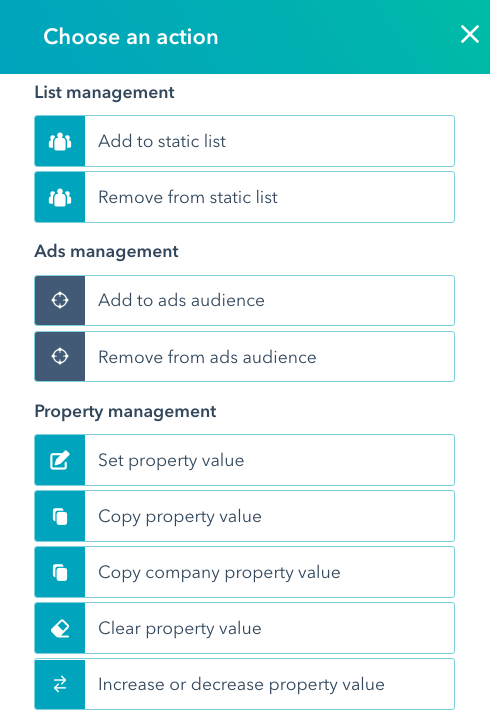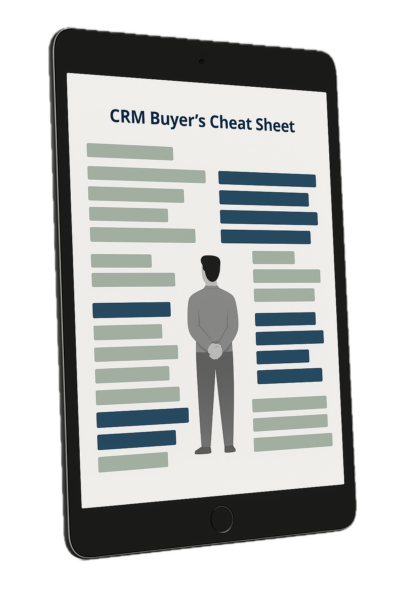
Many B2B marketers are guilty of blanketing a wide variety of prospects with the exact same outbound content, regardless of a prospect’s industry, job role or company size.
Similarly, a lot of marketers send the same email message to all customer contacts, regardless of a contact’s role or which of their company’s products or services a contact’s company is currently using.
In both these cases, there’s low to no marketing segmentation—which means one big target for each.
When too many email recipients frequently receive irrelevant (to them) information, there are several consequences. One consequence is a high unsubscribe rate. The other is fewer email opens. A low ratio of opens to sends can lead to an overall decline in sender reputation for a company.
Segmenting B2B leads and contacts into smaller groups and creating more diverse content results in more relevant, targeted communications. But effective B2B marketing segmentation is easier said than done.
Let’s first look at what factors make B2B segmentation difficult. Then we’ll look at some potential solutions.
Barriers to effective B2B marketing segmentation
The data source for marketing segmentation is often a combination of a CRM system and a marketing automation system. Many businesses use best of breed CRM & MA solutions and synchronize them with one another.
But even with these tools in place, effective B2B marketing segmentation can require a lot of time and effort. Here are some of the reasons.
People’s job titles are all over the map

If you target customer service managers with one of your products or services, wouldn’t it be great if every customer service manager in your target list had the exact same job title on their business card?
Try exporting a list of contact titles from your CRM system and then pivot on the titles in a spreadsheet. You will likely be surprised by how many job titles in a list are unique from the rest.
I recently pivoted on one of a customer’s target contact lists and found out that all but 18 of 383 contacts in the list had a unique title.
Buyers in different size companies have different job roles
B2B marketers may need to target different job roles in companies of different sizes.
For example, while the CFO at a smaller company may be directly involved in the purchase of one of your company’s products or services, this may not be the case at a larger company.
B2B companies sell into multiple sectors
Another dimension for many B2B companies is industry or sector.
Some companies have different flavors of their offering for different industries. It’s common for a product or service to solve different types of problems across sectors.
Different buying responsibilities across target companies
Buying decisions for the same product or service may be made by different roles, depending on the organization.
A example is CRM buying. Sometimes CRM is a purchase driven by the VP of Sales and sometimes it’s an IT purchase.
A lack of online profile data
As consumers, we’re constantly providing a valuable flow of our demographic, psychographic, behavioral and geographic data to B2C marketers. Where we drive, what we purchase, what streaming series we watch, who we vote for, what we post, and a lot of other inputs—this is all data that is being collected, fed upstream, and used by B2C marketers to digitally target us.
But as business employees or owners, we’re not feeding nearly as much useful data upstream. The B2B marketer’s vision of us is much more obscure.
Incomplete business data
If customer purchase history is locked up in an ERP system and not available in a CRM system, it’s very difficult to target people based on what product or service their company has from us and, more important, what they could be buying from us.
❓The CEO may have asked why we are not selling more B widgets to our A widget customers.
Not enough time to strategize and plan
For busy marketing departments with many competing priorities, it can seem that there aren’t enough hours in the day to strategize on a segmentation approach.
A lack of internal resources
Even if there’s a solid strategy and a plan for segmenting contacts, a company may not have the resources to make all the necessary record updates.
Also, the beauty of sending the same message to everyone is that only one message needs to be authored. With segmentation comes a greater content development effort and, therefore, more resource requirements.
Approaches to Better B2B Segmentation

One level of solution is to devote resources to consolidate and normalize the important dimensions in CRM and marketing automation databases.
When it comes to the available data values for a given dimension, less is often more for better segmentation.
Role buckets
If you distill an unmanageably large number of different job titles into a much smaller number of roles, it will be easier to target the right people with your marketing messages.
Step 1 is to define the roles, and then Step 2 is to map titles to roles. This takes a lot of manual effort but may be worth it in the long run.
Automatic role assignment is a good use case for intelligent CRM. An AI could consume existing mappings and learn from those to perform future mappings.
Company size (revenue or number of employees)
Revenue is a dimension that can have a large number of different values. If the company size or revenue field is a dollar amount, there could be 100% unique values across records.
In finance, simple company segmentation is small cap, mid cap and large cap. Consider dividing your market’s company size into two or three buckets.
Industries or sectors
Different big data sources can have varying names for the same industry.
Start by coming up with the right set of target industry or sector names as they apply to your company. Then map external data source names to your naming conventions.
Your internal list of target industries or sectors may differ substantially from the default list of industry values that your CRM system comes with. You can effectively ignore a CRM system’s out of the box industry pick list values.
Behavioral segmentation

With the right tools in place, email recipient and website visitor behaviors can be captured.
Whether you’re using actions in a HubSpot Workflow, a Pardot Engagement Program or an ActiveCampaign Automation, there are many ways you can turn behavior into useful data points for refining segments.
Tools like these allow for automatically updating Contact records with new field values, tags, list membership, campaign membership and more.
🎯 Behavioral segmentation is an underutilized “secret weapon” that’s available to many marketers within their company’s marketing automation system.
Allocating time & resources to pull it all together
If marketing can make a business case that more targeted outbound communications will result in more marketing qualified leads and more cross-sell opportunities, it will be easier to allocate time and obtain resources.
One approach is to start by segmenting contacts on one dimension and then measure results. If there are positive results, expand segmentation to other dimensions.




